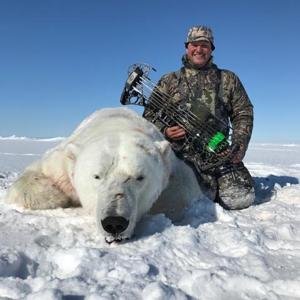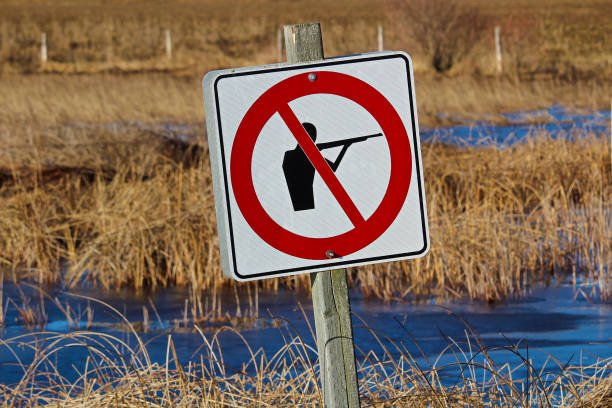Polar bear hunting in Alaska is a complex and highly regulated activity that involves hunting skills and a deep understanding of the laws, traditions, and challenges surrounding this practice. In this article, we will have a deep insight into laws, traditions, and challenges while hunting polar bears.

Laws And Regulations
Three key entities regulate polar bear hunting in Alaska to ensure the conservation and sustainability of their populations:
1. Marine Mammal Protection Act (MMPA)

Enacted in 1972: The MMPA regulates the hunting of marine mammals, including polar bears, in Alaska.
Prohibits hunting: The MMPA prohibits the hunting except for limited exceptions, such as subsistence hunting by Alaska Natives.
Permits and exemptions: The MMPA allows for permits and exemptions for certain activities, such as scientific research and conservation efforts
2. Endangered Species Act (ESA)

Listed as threatened: In 2008, the polar bear was listed as a threatened species under the ESA due to the impacts of climate change on their habitat and populations.
Additional regulations: The ESA imposes additional regulations on polar bear hunting, including restrictions on the number of bears that can be hunted and requirements for conservation plans.
Consultation and permitting: The ESA requires federal agencies to consult with the U.S. Fish and Wildlife Service and obtain permits for activities that may impact them.
3. Alaska Department of Fish and Game

Management authority: The Alaska Department of Fish and Game has management authority for polar bears in Alaska.
Permitting and licensing: The department issues permits and licenses for polar bear hunting, including subsistence hunting permits for Alaska Natives.
Bag limits and harvest management: The department sets bag limits and harvest management strategies to ensure sustainable hunting practices and maintain healthy polar bear populations.
Monitoring and research: The department conducts monitoring and research programs to inform management decisions and ensure the conservation.
Penalties For Violation

- Fines: Up to $100,000 for violating federal laws and regulations.
- Imprisonment: Up to one year for violating federal laws and regulations.
- License Revocation: Hunting licenses can be revoked for violating state laws and regulations.

If a hunter exceeds these quotas or fails to comply with reporting requirements, they may face civil and/or criminal penalties. For instance, an Alaska man was sentenced to three months in federal prison and fined $4,500 after killing a polar bear and wasting its meat.
Traditional And Cultural Significance
Alaska Natives have a deep cultural and spiritual connection to polar bears, which are an integral part of their traditional way of life. For centuries, Alaska Natives have relied on them for food, clothing, and other essential resources, and have developed a rich cultural heritage surrounding the species

Spiritual Significance
Respect and reverence: They are considered sacred animals in many Alaska Native cultures, associated with strength, protection, and provision.
Spiritual connection: The hunt is believed to be a spiritual experience, with hunters seeking guidance and protection from the spirits.
Ceremonies and rituals: Traditional ceremonies and rituals are performed before and after the hunt, honoring the bear's spiritual significance and ensuring a successful hunt.

Cultural Significance
Traditional way of life: Their hunting is an essential part of Alaska Native traditional way of life, providing food, clothing, and other essential resources.
Community-based: The hunt is often a community-based activity, with hunters working together to harvest and distribute the bear's meat and other products.
Storytelling and oral tradition: Polar bear hunting stories and legends are passed down through generations, preserving Alaska Native cultural heritage and traditions.

Traditional Hunting Practices
Subsistence hunting: Their hunting is primarily done for subsistence purposes, providing food and other essential resources for the community.
Traditional hunting methods: Alaska Natives use traditional hunting methods, such as stalking and ambushing, to harvest polar bears.
Respect for the animal: Hunters show respect for the animal by using as much of the bear as possible, minimizing waste, and performing traditional ceremonies to honor the bear's spirit
Challenges of Hunting Polar Bears in the State of Alaska
Following are the challenges faced while hunting them

Environmental Challenges
- Harsh Weather Conditions: Their hunting takes place in extreme Arctic conditions, with temperatures often dropping below -40°C (-40°F) and winds reaching speeds of up to 100 km/h (62 mph).
- Remote and Inaccessible Terrain: They inhabit remote and inaccessible areas, requiring hunters to travel long distances by air or snowmachine to reach hunting grounds.
- Sea Ice Instability: Climate change is causing sea ice to melt at an alarming rate, making it increasingly difficult for hunters to access polar bears in their traditional habitat.

Safety Challenges
- Polar Bear Behavior: They are unpredictable and can be aggressive when hunting or defending themselves. Hunters must be prepared for unexpected encounters and know how to react.
- Hunting in Bear Country: Alaska is home to a large population of brown bears, which can pose a significant threat to hunters. Hunters must be aware of their surroundings and take necessary precautions.
- Remote Medical Response: In the event of an emergency, medical response times can be slow due to the remote location of hunting areas.

Economical Challenges
- High Costs: Polar bear hunting in Alaska can be expensive, with costs including guide fees, transportation, and equipment.
- Limited Economic Benefits: The economic benefits of hunting them are limited, with only a small number of jobs and revenue generated from the industry.
- Uncertainty and Risk: Their hunting is a high-risk activity, with uncertainty surrounding the success of hunts, weather conditions, and regulatory changes.

Hunting Methods

- Stalking and Ambushing: Hunters use traditional knowledge and skills to stalk and ambush them, often using ice ridges, snowdrifts, and other natural features for concealment.
- Pit Traps and Snares: In some areas, hunters use pit traps and snares to catch them, although these methods are less common today.
- Harpoon and Net Hunting: Inuit and other Arctic communities have traditionally used harpoons and nets to hunt them from kayaks or umiaks.
- Rifle Hunting: Modern rifle hunting is the most common method used today, with hunters often employing high-powered rifles and scopes.
- Snowmachine and Boat-Based Hunting: Hunters use snowmachines (also known as snowmobiles) and boats to access polar bears in remote areas.
- Baiting and Luring: Some hunters use bait, such as seal blubber or other attractants, to lure them into shooting range.
Polar Bear Attack Alaska

They attack on humans are extremely rare. According to records, there have been only a few documented cases of their attacks in Alaska since the 1960s. On average, there are about 2-3 reported polar bear encounters in Alaska each year, but most do not result in attacks.
Most attacks on humans are defensive, occurring when bears feel threatened, surprised, or when they are protecting their young. In some cases, they may attack humans if they are hungry, habituated to human food, or if they are in poor physical condition.

Wales Alaska Polar Bear Attack
The attack in Wales, Alaska, on January 17, 2023, was a tragic and rare event that shocked the remote Arctic community.
In this incident, a polar bear entered the small village and fatally attacked 24-year-old Summer Myomick and her 1-year-old son, Clyde Ongtowasruk, as they were walking between buildings near the local school.
The bear was reported to have been chasing other residents before the attack, creating panic in the village. A community member ultimately shot and killed the bear to prevent further harm.
Subsequent investigations revealed that the bear was an older male in poor physical condition, likely struggling to find food in its environment.
While tests for pathogens that might explain its aggressive behavior came back negative, experts believe the attack could have been driven by hunger and the increasing strain on polar bears as their Arctic habitat continues to shrink due to climate change.
This incident underscores the growing challenges faced by communities in its territory and highlights the importance of safety measures and conservation efforts in mitigating human-wildlife conflicts.
Conclusion
Polar bear hunting in Alaska is a complex and multifaceted practice that involves not only hunting skills but also a deep understanding of the laws, traditions, and challenges surrounding this practice. By respecting the animal, following traditional practices, and adhering to strict safety protocols, hunters can help ensure the sustainability of hunting them in Alaska.












